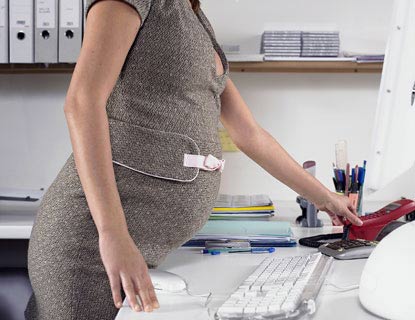|
 More than three decades after Congress passed a law trying to protect pregnant women in the workplace, discrimination is still widespread and needs to be combated with publicity and clearer guidelines, according to testimony Wednesday at a federal hearing. |
|
More than three decades after Congress passed a law trying to protect pregnant women in the workplace, discrimination is still widespread and needs to be combated with publicity and clearer guidelines, according to testimony Wednesday at a federal hearing. The Equal Employment Opportunity Commission's legal counsel, Peggy Mastroianni, said the agency had resolved 52,000 pregnancy cases since 2001, with $150.5 million paid out in damages. Discrimination against pregnant women includes firing, forced leave without pay, being denied a place to pump breast milk and being barred from some work, witnesses told the five-member EEOC panel at a hearing on the issue. Decades after the passage of the 1978 Pregnancy Discrimination Act, discrimination ranges from the shop floor to the executive suite, with sexual stereotyping a major factor. It is found in every state, but is more likely to hit women in low-income jobs, they said. "This many years after the Pregnancy Discrimination Act, we still have employers who still don't understand the basics. Are we getting the word out on fundamental issues?" said Commissioner Constance Barker. The issue of workplace discrimination was highlighted two weeks ago when a federal judge in Texas ruled against a Houston mother who said she was fired after asking for a place to pump breast milk. The EEOC helped litigate the case. General Counsel David Lopez said the agency was weighing whether to appeal the ruling. The Pregnancy Discrimination Act forbids discrimination by employers based on pregnancy, including hiring, firing, pay, job assignments and promotions. Under the law, pregnancy is considered a temporarily disabling condition. Witnesses said overlapping laws and rules, such as the Pregnancy Discrimination Act, the 1990 Americans With Disabilities Act and the Family and Medical Leave Act, had created gray areas that left employers uncertain about how to deal with pregnancy. One issue was how to compare treatment of a pregnant woman with that of other employees, they said. "In our view, the current laws are a little confusing and in some cases contradictory," said Deane Ilukowicz, a human relations executive with Hypertherm Inc, a Hanover, New Hampshire, maker of metal cutting gear. (Read by Nelly Min. Nelly Min is a journalist at the China Daily Website.) (Agencies) |
据周三美国联邦法院听证会的证词显示,在美国国会通过保护职场女性孕期权利的法律三十多年之后,职场女性怀孕依然广泛遭受歧视,需要通过加大宣传和制定更明确的指导方针来和歧视作斗争。 平等就业机会委员会的法律顾问佩奇•马斯楚安尼说,自2001年以来,委员会已经处理了5.2万起怀孕案件,涉及的伤害赔偿金达1.505亿美元。 在听证会上,证人告诉平等就业机会委员会的五人评判小组说,对怀孕女性的歧视包括解雇、强迫停薪留职、拒绝提供哺乳场所和禁止从事部分工作。 在通过1978年《怀孕歧视法案》几十年之后,不管是普通员工,还是管理层,很大程度上依然存在性别成见。他们说,对怀孕女性的歧视在美国各州都广泛存在,而低收入职业女性更容易遭受歧视。 委员会委员康斯坦斯•巴克说:“通过《怀孕歧视法案》后这么多年来,还是有雇主不理解该法案的基本要义。我们是否有效传播了有关基本问题的法规?” 职场女性歧视问题在两周前成为了众人关注的焦点。一位来自休斯敦的母亲称自己要求单位提供哺乳场所,结果被解雇,得克萨斯州的一名联邦法官判决这位母亲败诉。 平等就业机会委员会帮助就这一案件进行争讼。总法律顾问戴维•洛佩茨说,委员会在考虑是否要对该判决提出上诉。 《怀孕歧视法案》禁止雇主的怀孕歧视行为,包括雇佣、解雇、发薪、工作分配和提升等各个方面。依据该法律,怀孕被视为暂时丧失劳动能力的状态。 证人说,法律法规的重叠,例如《怀孕歧视法案》、1990年《美国残疾人法案》和《家庭与医疗休假法案》,制造了灰色地带,让雇主不确定如何处理怀孕问题。 他们说,其中一个问题是如何比较怀孕女性的待遇和其他员工的待遇。 美国海宝公司的人力总监迪恩•伊路科维奇说:“在我们看来,现行的法律有点混乱,某些情况下甚至自相矛盾。”海宝公司是新罕布什尔州汉诺威一家生产金属切割仪器的企业。 相关阅读 (中国日报网英语点津 陈丹妮 编辑:Julie) |
|
Vocabulary: shop floor: (工厂工人的)工作场所 get the word out: 散播、传播消息,把消息传开去 litigate: 就……争讼 appeal: 对……上诉 |
